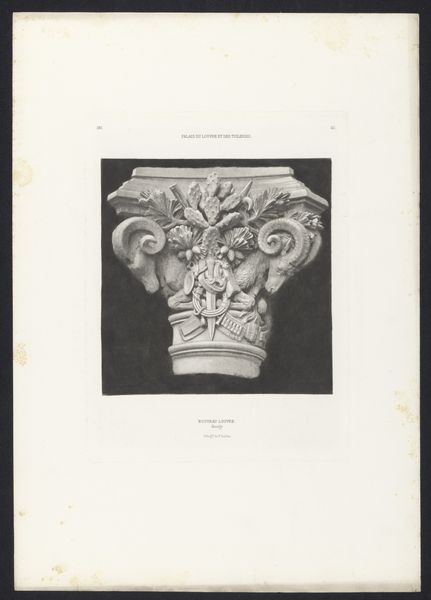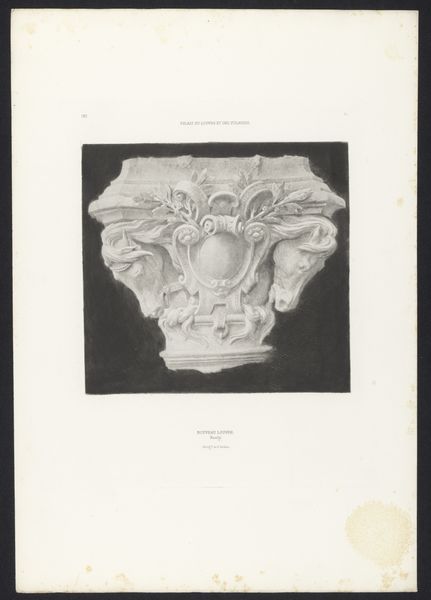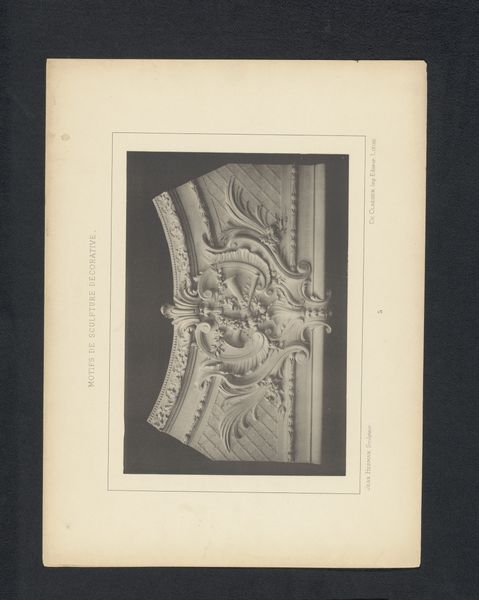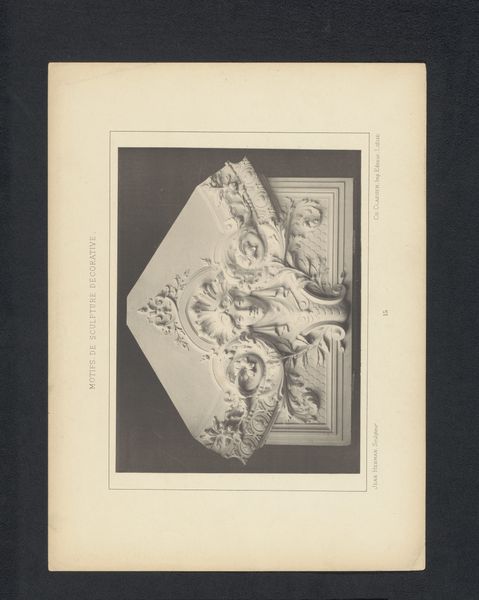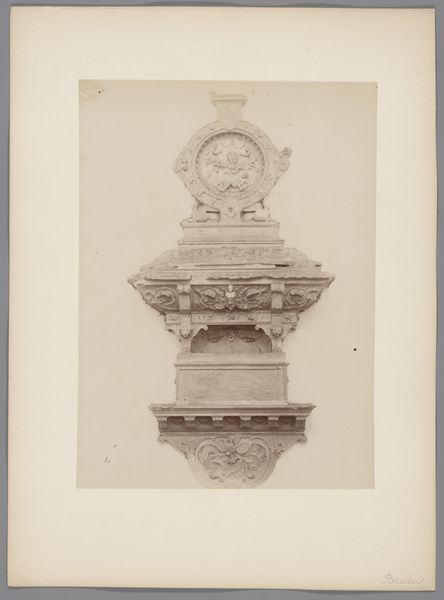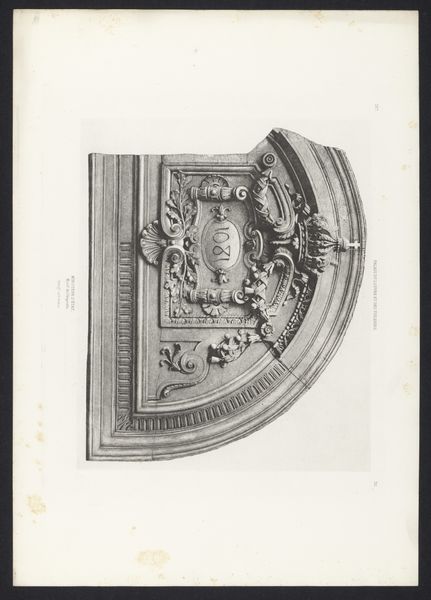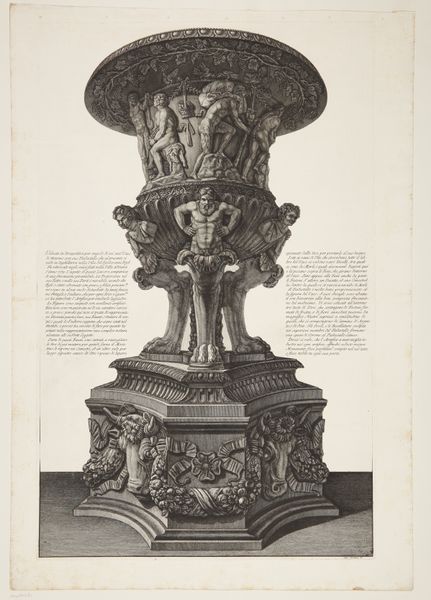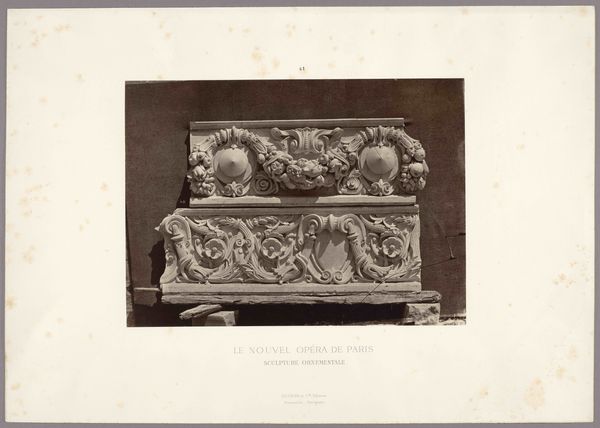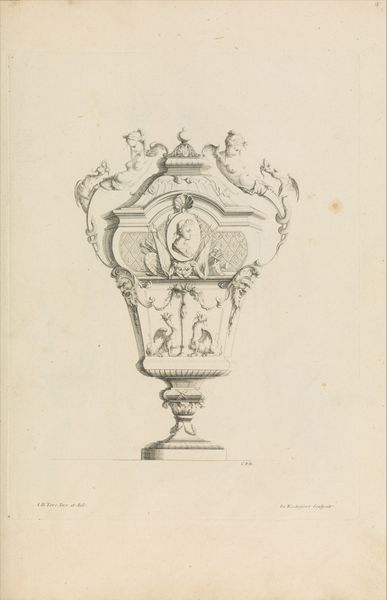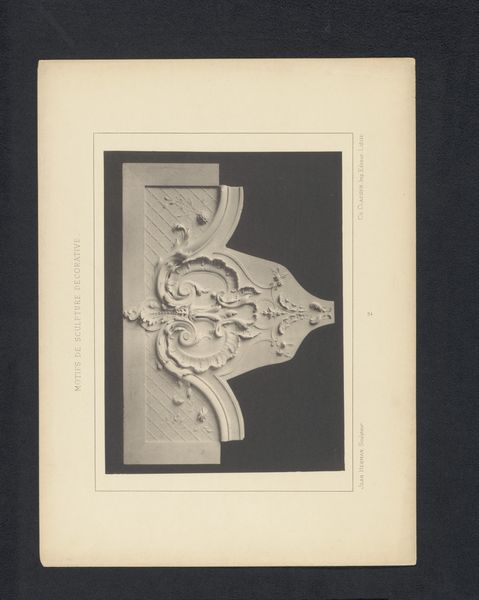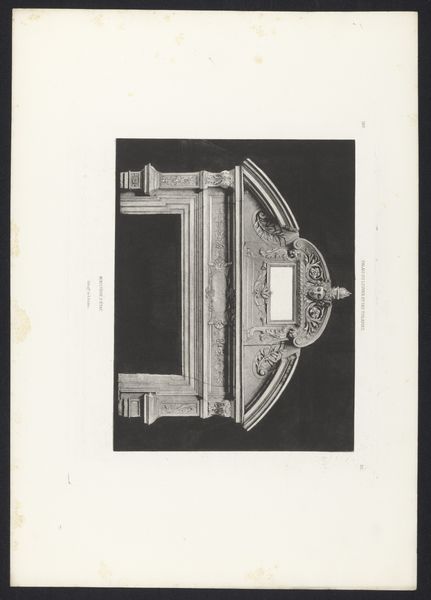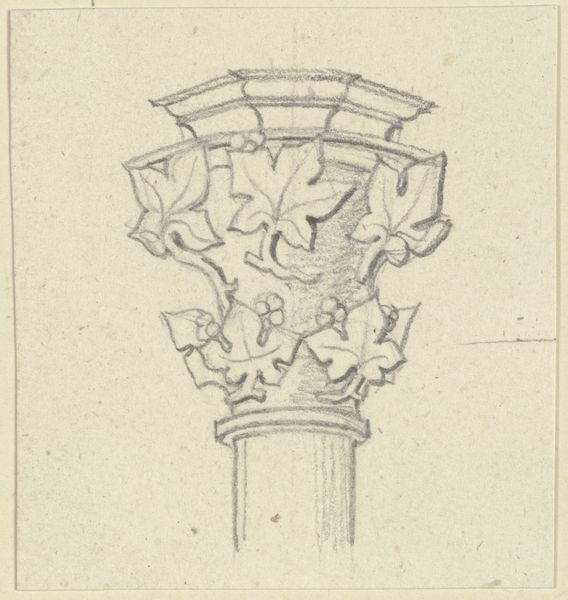
Fotoreproductie van een tekening, voorstellende een kapiteel met dierornamenten voor de Salle du Manège in het Palais du Louvre te Parijs before 1870
0:00
0:00
drawing, lithograph, print, paper, photography, architecture
#
drawing
#
lithograph
# print
#
classical-realism
#
paper
#
photography
#
academic-art
#
architecture
Dimensions: height 218 mm, width 201 mm
Copyright: Rijks Museum: Open Domain
Curator: Here we have "Fotoreproductie van een tekening, voorstellende een kapiteel met dierornamenten voor de Salle du Manège in het Palais du Louvre te Parijs," dating to before 1870. It's an intricate print and drawing attributed to Edouard Baldus, a melding of photography and lithography on paper, currently held here at the Rijksmuseum. My first thought is: what a powerful symbol. Editor: My first impression is a blend of awe and a touch of… unease. The detail is remarkable. Those animal figures—they almost seem to be leering out at the viewer. But placing it in the political and social context, it becomes much more provocative. Curator: Exactly! Consider the Louvre, transitioning from royal palace to a public museum during periods of intense political upheaval. The Salle du Manège itself served as the seat of the National Assembly during the Revolution. Editor: So, these animal ornaments weren’t merely decorative; they were laden with symbolic meaning during the reshaping of France and its relationship to power and class. I am thinking about which social structures the Louvre and French nation serve. Curator: Precisely. Baldus captured a capital intended for a space where monumental decisions were being made. Animalistic imagery, deeply rooted in classical traditions, were being reinterpreted within the theatre of revolutionary politics. Editor: I am wondering who those beasts represent or resemble. Looking closely, are those grotesque figures intended to undermine, perhaps satirize, those making decisions? This wasn’t mere ornamentation; it's a commentary about class, and political authority using iconography as propaganda. Curator: It speaks to how architecture became politicized. Ornament became a tool. Its distribution was about who holds, creates and deserves the power and social spaces available. Editor: I now feel the image resonates more deeply. Thank you for revealing this historical context. Now, it invites me to challenge those symbols and consider where their traces endure today. Curator: I am glad you enjoyed my perspective on this thought provoking architectural ornament. It reveals power through its animal subjects. Editor: Thank you for contextualizing the architectural moment through that powerful capital. Now it is ripe to consider who is being shut out and represented.
Comments
No comments
Be the first to comment and join the conversation on the ultimate creative platform.

